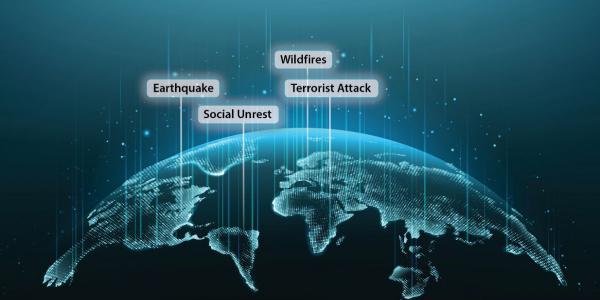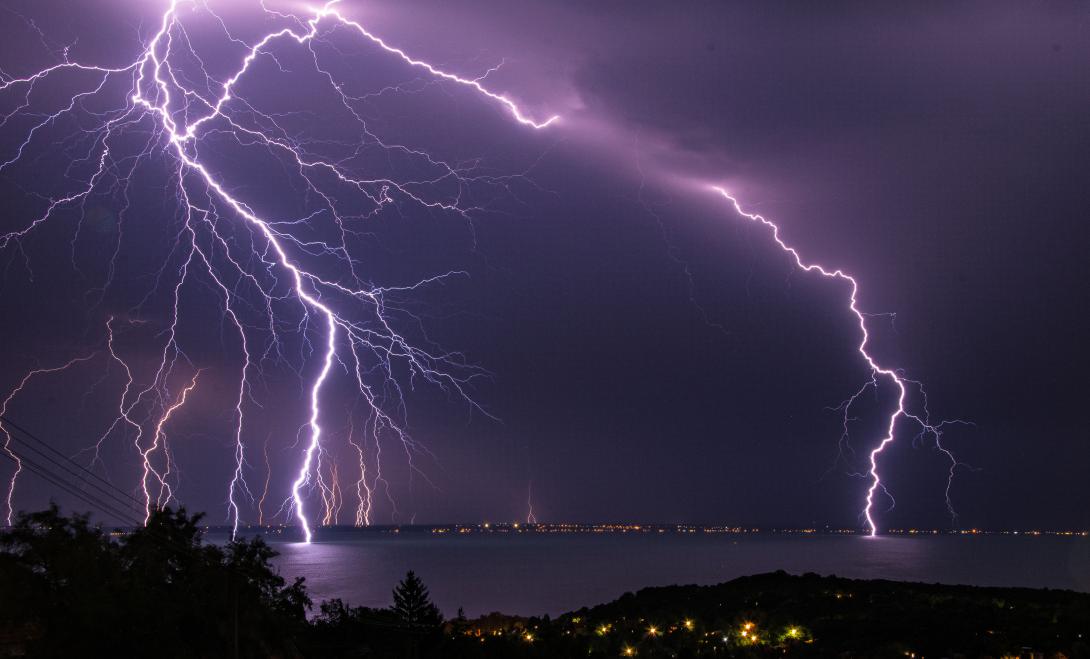Connecting the Dots on Critical Event Data
A company founded by military veterans uses artificial intelligence to alert clients to major events, such as natural disasters, strikes or political unrest, around the world that will affect their organizations and operations. The company, Stabilitas Intelligence Communications, has traditionally worked with large, commercial businesses, including “one of the world’s largest retailers” and “several global logistics and consumer product companies,” Stabilitas officials say. But the company is now actively seeking government customers in the national security and defense arena.
The Stabilitas Critical Event Intelligence platform and application program interface integrates more than 15,000 trusted data sources across government, weather and geological, local and international, social media and other external data feeds, such as transportation terminals, event venues, and energy facilities and pipelines, into a single feed, providing dedicated tracking of an organization’s resources on a global scale, according to the company’s website. The company describes its software as a full-suite solution for event monitoring, asset intelligence and mass notification.
Chris Hurst, Stabilitas co-founder and chief operating officer, says the software uses relationship graphs. The concept is similar, he indicates, to Facebook’s ability to track relationships between users or the Defense Department’s documenting a terrorism suspect’s connections to family, friends, business associates or co-conspirators. But in this case, the company’s software connects the dots on critical events. “The problem that we solve is that our clients, typically multinational companies, have operations all over the world, and when critical events happen—earthquakes, strikes, disasters, protests—it puts their people or operations at risk,” says Hurst.
And the stakes are higher than tracking who likes what on social media. “The benefits are speed, coverage and actionability—our three pillars—and the ability to proactively decrease risk and reactively respond in seconds. The benefits are about saving lives, about preventing harm, and getting alternate plans in place and implementing those plans as fast as possible,” Hurst asserts.
Both Hurst and co-founder Greg Adams, Stabilitas CEO, report having combat experience. Hurst was an Army diver who served as an operations officer with U.S. Army Command Central in Iraq and Afghanistan. He later worked as the emergency risk management director for Mercy Corps, a nongovernmental, humanitarian aid organization.
Adams served as an Army Green Beret in the Pashtun area of Afghanistan, where he needed to quickly warn allies about the presence of threats, including improvised explosive devices (IEDs), according to his online biography. He attempted to track and share data through email, texts, group chat accounts, calls and word-of-mouth sources but with limited success, the biography says.
Both men were frustrated by the lack of reliable, actionable, up-to-date threat data. For example, Hurst says that following his service he worked on construction projects in the Middle East and was not given critical information on rocket attacks. “We had some employees who suffered. One lost an arm from a rocket attack,” Hurst says. “The pattern from the rockets had changed, and I didn’t get that data as a project manager. I thought the area of Afghanistan we were in was safe, but the data actually showed a different story. I really should have had that data.”
While serving with Mercy Corps, he helped build an $80 million water project in the Congo. “My vendors missed the fact that there was a militia attack planned, and it completely disrupted the project. In that case, we paid human analysts, like intel officers but for the civilian community, to go get that information, and we realized we would need thousands of humans to manually read the news and social media. There’s just too much information. You have to use technology,” Hurst continues.
Adams, on the other hand, needed more reliable information on the location of IEDs and other dangers. “Greg, as a green beret, wanted to know where the IEDs were and wanted to be able to share that information with NATO partners, wanted to understand the real-time context of whatever was happening in the communities he was working,” Hurst reports.
Despite the founders’ military experience, Stabilitas mostly avoided contracting with the government, in large part because of the cumbersome procurement process. “If I’m selling to the Defense Department, and I work for a year on the perfect white paper and the next year on solving the request for proposals, the next year on writing the perfect proposal, I may get a massive project, but it may be that whoever constructed that request for proposals three years ago had the wrong idea about what was actually needed,” Hurst explains.
Additionally, working with the commercial sector allows businesses to correct their own mistakes more rapidly. “All entrepreneurs have wrong assumptions in the way they think about the problem and their solution. Working with businesses allows us to correct those assumptions much faster,” Hurst continues. “In general, the most important thing for entrepreneurs is iterating on an idea. Businesses and individuals allow us to do that so much faster.”
The company initiated a relationship with the government through a small business innovation research (SBIR) grant awarded by the National Science Foundation (NSF). The project is scheduled to end early in 2021. The company is now working on phase 2B. Company officials also are engaged in discussions with the Defense Department, intelligence community and operational organizations, they say.
Phase 3 of the SBIR program focuses on product commercialization and allows other government departments and agencies interested in a solution to award sole-source contracts to vendors.
The SBIR program, combined with the expanding focus on other transaction authorities, also known as OTAs, makes working with the government much more attractive, Hurst indicates. OTAs allow for more rapid product development and government acquisition and are touted as a way of attracting nontraditional vendors to work with the military and other government agencies. Without going into detail, Hurst reveals the company is in the early stages of several OTAs. “This SBIR program allows us to advance as a government space at a faster level. Then you throw in an OTA, and it’s awesome,” Hurst declares.
He noted during an interview with SIGNAL that the company was awarded an innovation award from AFCEA and the Intelligence and National Security Alliance. He also has spoken at an intelligence summit hosted by the two organizations. That appearance led to his being approached by at least one government organization interested in the company’s solution, he says.
The NSF project is helping the company to fine-tune its product in several areas: event detection, severity detection, entity detection, time normalization, geoparsing and clustering. “The specific innovations we’re doing with the NSF relate to our machine learning pipeline,” Hurst offers. “The NSF helps us with each of these steps.”
Much of the data being monitored is open source, unstructured data, such as news reports and social media feeds, and the technology must determine what information is important to clients. It can be difficult, for example, for technology to distinguish between stormy and Stormy. “If I told our clients that Stormy Daniels is headed to D.C., they’d be p***ed at me. But I do have to tell them when stormy storms are headed to D.C. So, the first step in our pipeline is teaching the machine to recognize the difference between Stormy Daniels and stormy storms,” he offers.
Severity detection simply means the machine must determine the severity of the event. For example, the word “storm” can mean anything from a brief rain shower to a hurricane. The same goes for other emergencies, whether it’s earthquakes, mass shootings or political protests. All can affect an organization to varying degrees.
Entity detection also can be tricky for machine learning software. For example, if a United Airlines flight crashes, news reports may refer to it as a “United Airlines flight,” a “UA flight” or just the flight number, and the machine must recognize that all refer to the same flight.
Time normalization means teaching the machine to understand references to time that are easy for humans to comprehend. Artificial intelligence technology more readily understands specific dates and times than abstract phrases such as “next Tuesday” or “in the morning.”
Hurst cites the popular television program The Simpsons to illustrate geoparsing. The show took place in a town known as Springfield, but the show never disclosed which state the town is in. According to the U.S. Geological Survey, there are 33 populated areas called Springfield scattered across 25 states. “In language processing, we call this the Springfield problem. If a news article says a protest is planned for Springfield, we have to figure out which Springfield it’s in,” Hurst says, adding that the technology solves the Springfield problem just as people do. “We use context in the article; we use street names; we use source material; we cross reference with other events the article talks about.”
Finally, clustering refers to the technology’s recognition of different data sources pointing to the same event. If the Geological Survey reports on an earthquake that registers 7.1 on the Richter scale and news reports refer to a 7.1 earthquake, the software needs to connect those events rather than reporting them as separate occurrences.
The company’s current clients already are benefitting from the enhancements made under the SBIR project, Hurst indicates. “NSF’s goal is not to pay for research and development that sits on a shelf but to ensure it’s commercialized and offers an economic benefit, so we’re actively providing the results to our customers as we speak.”






Comments